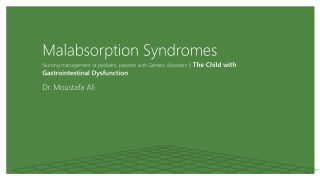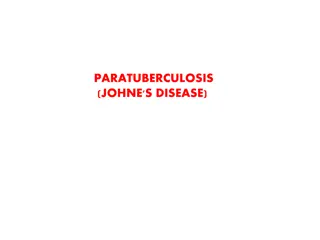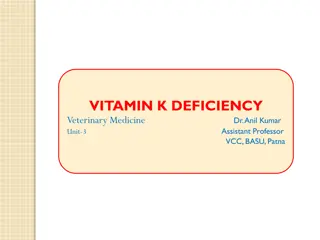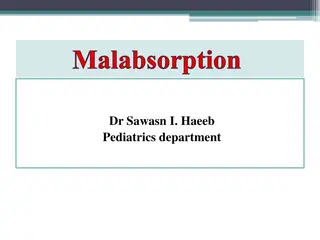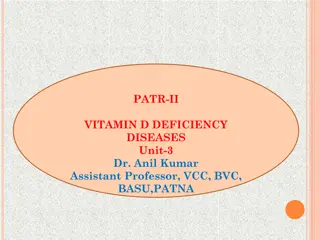Malabsorption Syndromes
The nursing management of pediatric patients with malabsorption syndromes, including identification of common gastrointestinal problems, implementation of the nursing process, and nutritional therapies.
31 views • 24 slides
Understanding Paratuberculosis (Johne's Disease) in Animals
Contagious and fatal, Paratuberculosis, or Johne's Disease, affects the small intestine of ruminants due to Mycobacterium avium subspecies paratuberculosis. It spreads through fecal-oral route, affecting animals' immunity, causing weight loss, decreased milk production, and diarrhea. The infection l
0 views • 14 slides
Understanding Vitamin K Deficiency in Veterinary Medicine
Vitamin K deficiency in animals can lead to serious health issues due to its crucial role in blood clotting and bone metabolism. Different sources of vitamin K, such as plant material and bacterial fermentation, provide essential forms like K1 and K2. Factors contributing to deficiency include fat m
0 views • 8 slides
Understanding Malabsorption Disorders in Pediatrics
Malabsorption disorders in pediatrics affect the digestion and absorption of nutrients, leading to symptoms like abnormal stools, failure to thrive, and specific deficiencies. Common symptoms include watery diarrhea, abdominal distention, and systemic issues like anemia and fatigue. Proper diagnosis
0 views • 54 slides
Haematology in Primary Care - Clinical Insights and Guidelines
Explore key topics in haematology such as leucopenia, B12 deficiency, and myelodysplastic syndrome with detailed guidance on interpreting full blood counts, red flags, investigations, and management strategies. Learn about special situations like B12 deficiency in pregnancy and malabsorption issues.
1 views • 30 slides
Understanding Rickets: Causes, Symptoms, and Treatment
Rickets is a metabolic bone disorder primarily caused by vitamin D, calcium, or phosphorus deficiency. It leads to softening and weakening of bones, affecting young growing animals. Genetic defects, dietary deficiencies, and malabsorption are common causes. The pathophysiology involves decreased cal
0 views • 22 slides
